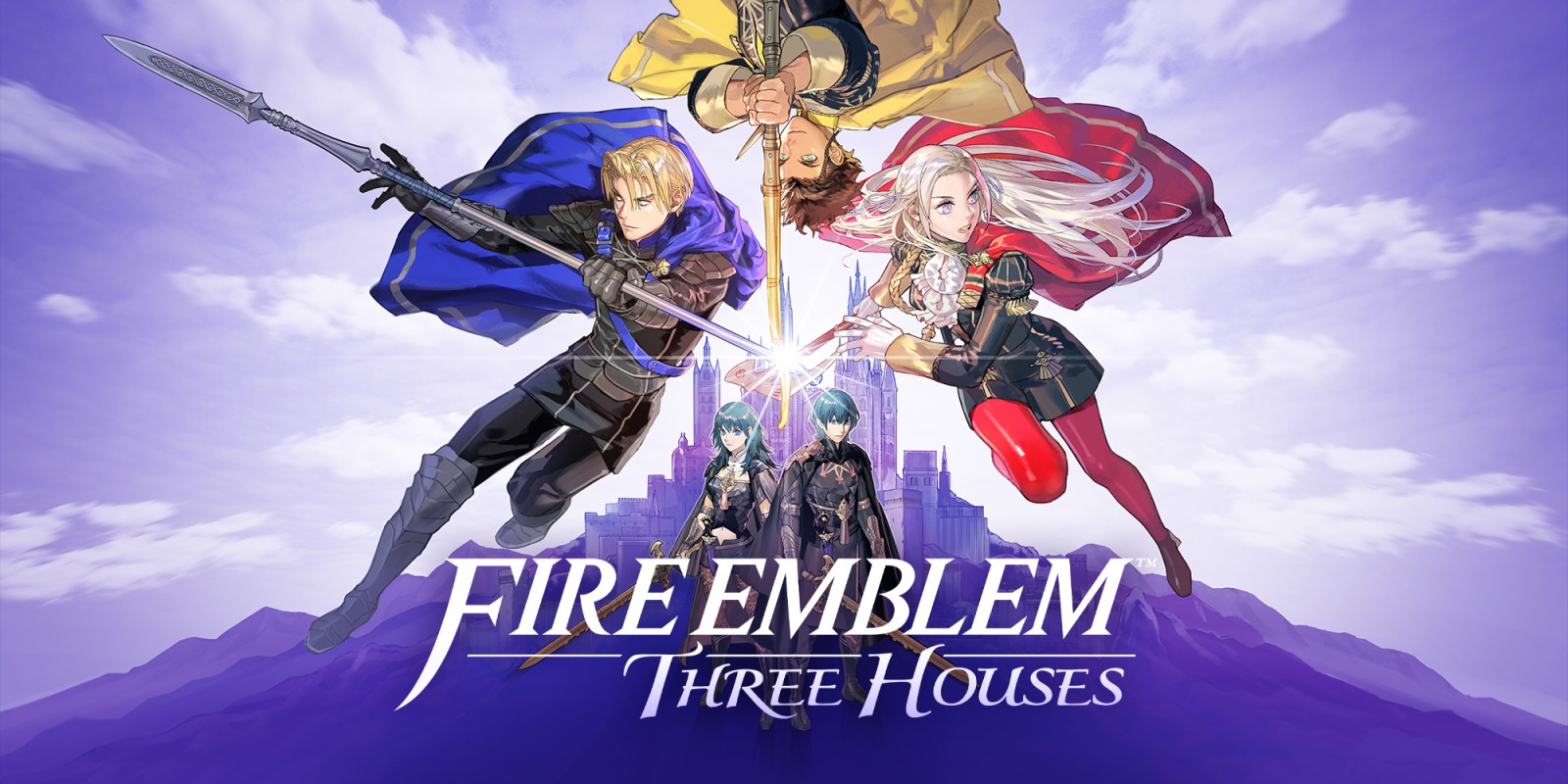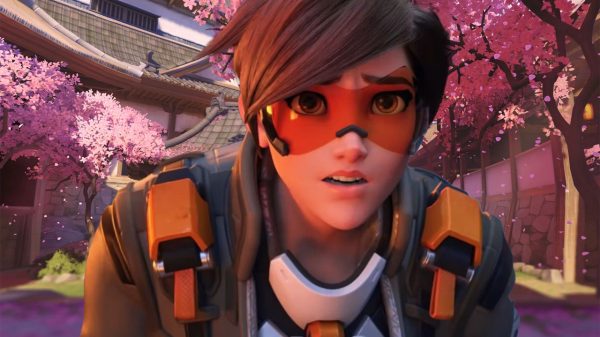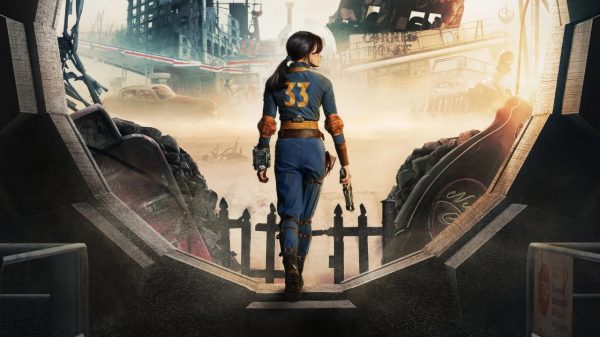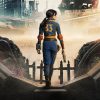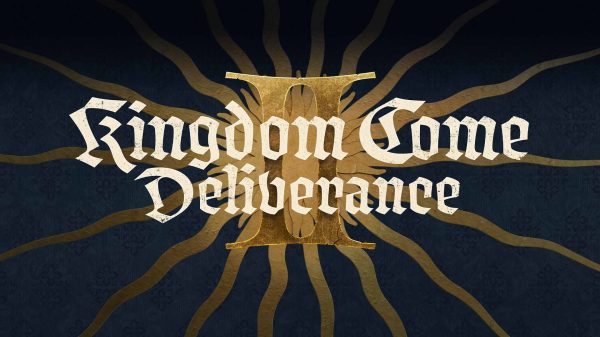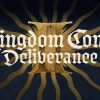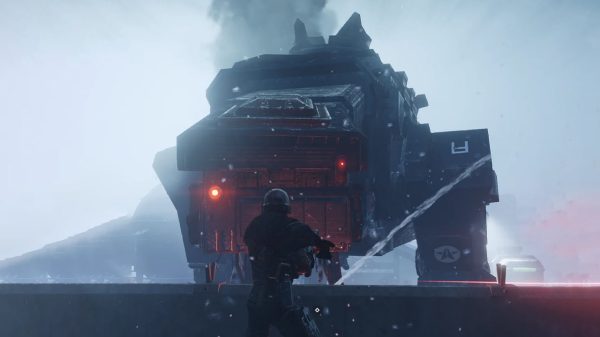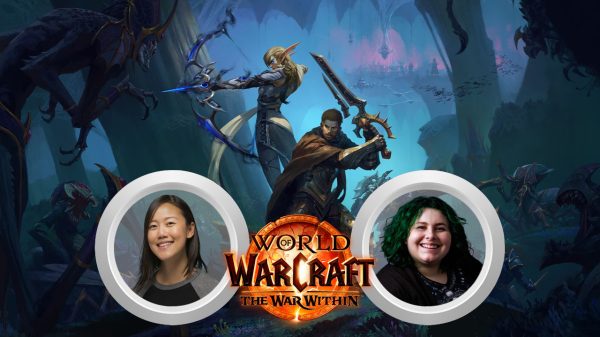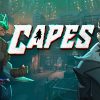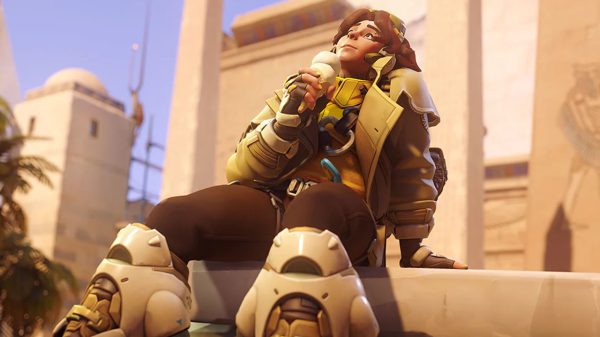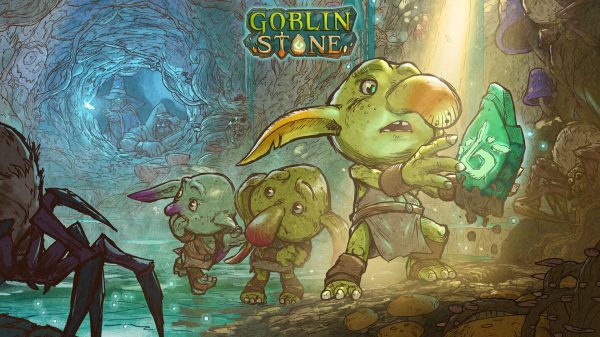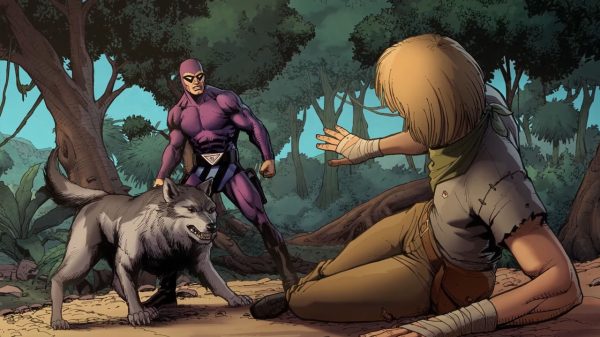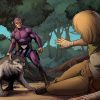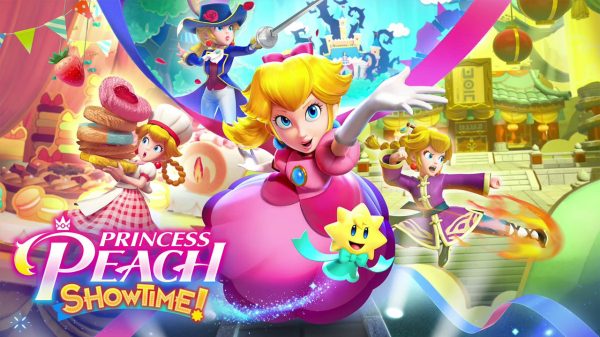For the first time in over a decade, Fire Emblem is back on a home console in the form of Fire Emblem: Three Houses on the Nintendo Switch. Despite Fire Emblem having risen to prominence in the west with Fire Emblem: Awakening back in 2012, I never found myself tinkering with the series too often, and oh boy, what a huge mistake was I making. Akin to a favourite series of mine Valkyria Chronicles, Fire Emblem: Three Houses manages to mix its excellent strategic gameplay with equally brilliant storytelling, allowing it to serve as a perfect starting point for those wanting to jump in to the series, while also catering to the hardcore demographic that made the franchise what it is today.
Fire Emblem: Three Houses quickly plunges the player into the thick of things. After watching a cutscene depicting a battle that once took place in the land of Fódlan, your player avatar Byleth is introduced to a mysterious young girl who has lost her memory. After chatting to the mysterious girl and determining your gender, birthdate and new name if you don’t fancy the default name, you awake from a dream, setting the story into motion. and his/her father Jeralt come across a trio of teens who are being attacked by thieves. After quickly ridding of the enemy, Byleth and Jeralt agree to come back with the teens to Garreg Mach Monastery, a large headquarters run by the Church of Seiros, where Jeralt is an esteemed Knight.
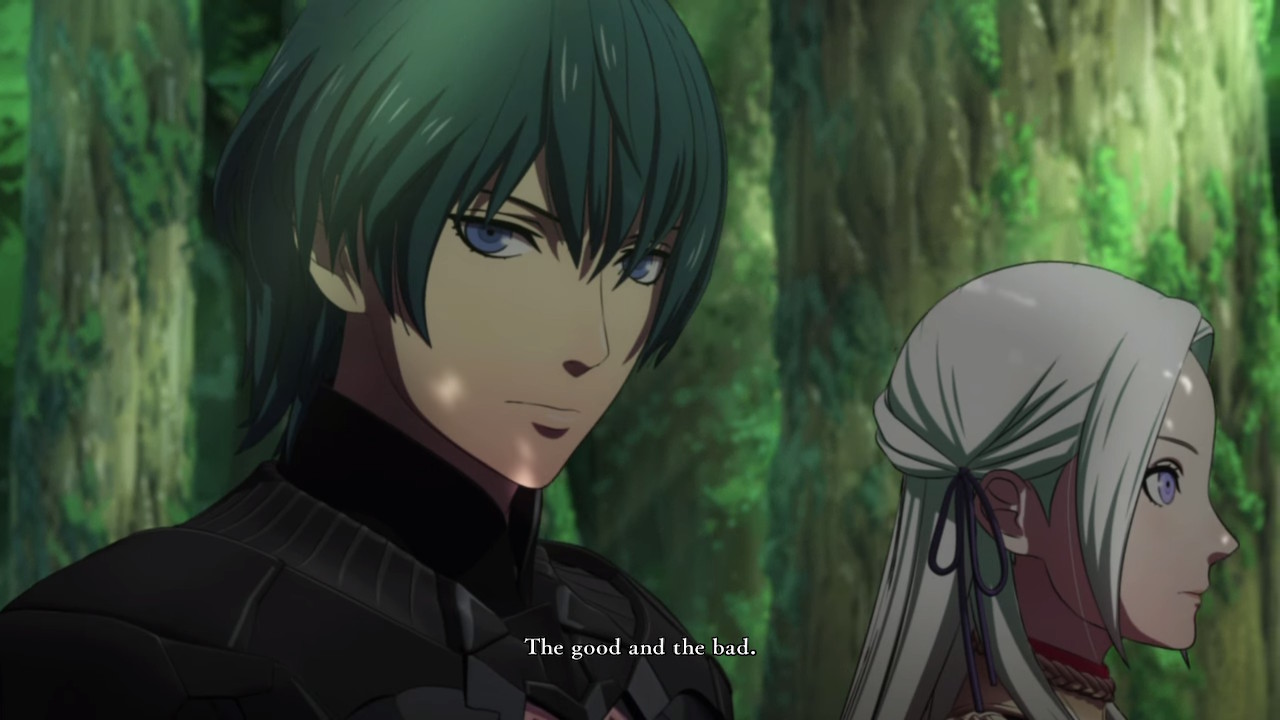
Byleth is a badass looking dude
Also situated at Garreg Mach Monastery is the Officers Academy, an esteemed school that teaches students how to become talented and proficient warriors, whether it be with weapons or magic. The three aforementioned teenagers you encounter at the start of the game, just so happen to be the respective leaders of the three houses present at the academy.
After a quick discussion with Archbishop Rhea of the Church of Seiros, Byleth is tasked with teaching one of the three student houses the academy, Edelgard’s Black Eagles, Dimitri’s Blue Lions, or Claude’s Golden Deer. After mingling again with the students of the academy, you have to make your choice, with the house you pick having an effect on how the narrative is shaped. Each houses students reside from one of the three nations that comprise the continent of Fódlan. The Black Eagles contains students from the Adrestian Empire, the Blue Lions students are from the Holy Kingdom of Faerghus, while the students of the Golden Deer are from the Leicester Alliance.
Fire Emblem: Three Houses narrative is enormous and dense, so it’s hard to really go into much more detail without writing an extremely long and convoluted review of the narrative, but just keep in mind that each house represents a different nation situated in the continent of Fódlan, and although the three nations may be at peace now, something big is bubbling under the surface that is inevitably going to bring these nations and their students to war. In short, the narrative on display in Fire Emblem: Three Houses is excellent. It’s long and winding with plenty of unexpected twists and turns, and yet despite the game’s length, the story doesn’t ever stumble. It manages to represent this extremely large world perfectly, and I’m excited to run through numerous different playthroughs to see if I can alter the course of events.
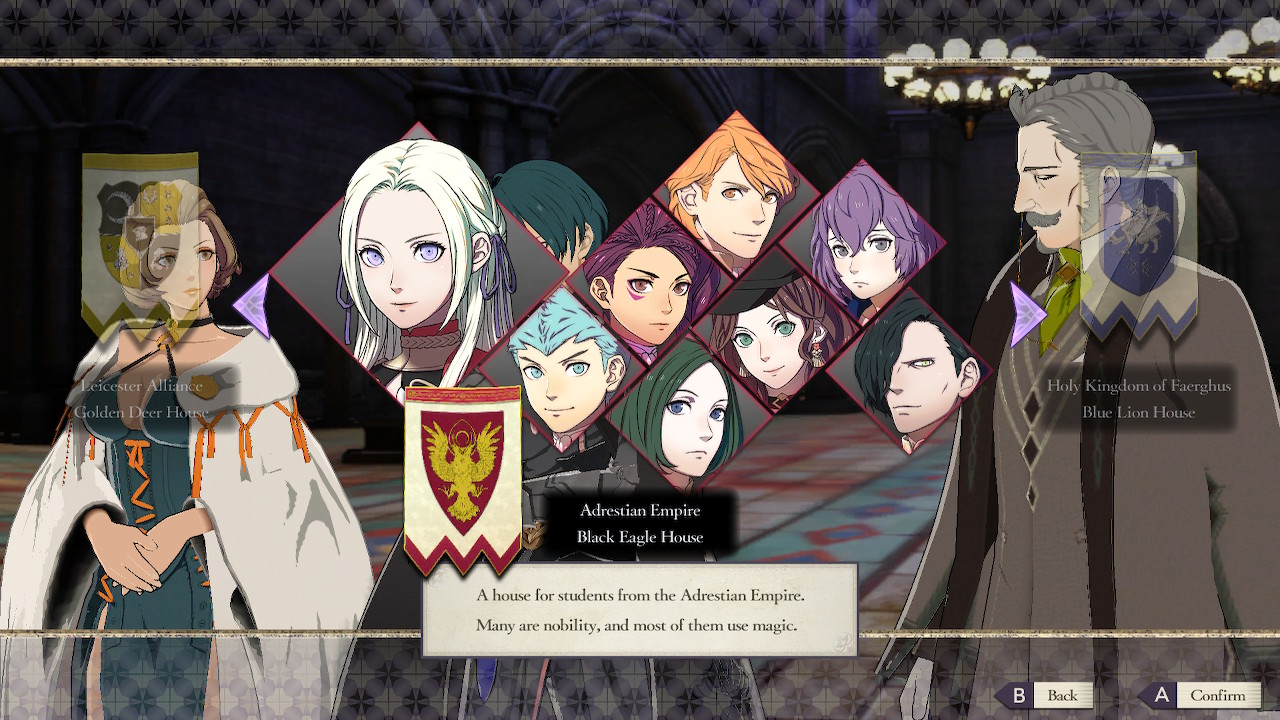
Picking the house you want to teach can be a tough decision
In terms of gameplay, Fire Emblem: Three Houses has plenty going on. The sheer amount of depth in its systems is sure to overwhelm anyone, and I’m being honest when I say I was initially overwhelmed by just how much is going on. Thankfully, if a lot of the busy work can be done automatically, meaning you can stress less about teaching your students inefficiently. Each chapter in-game is presented as a month, with a major story mission featured at the conclusion of a month. Every week has you teaching your students on a Monday, having particular students perform tasks on a Saturday, and spending your Sunday doing whatever you like; professors do need days off after all.
Teaching days see you instruct students on particular aspects of their training in order to level up their skills. Doing so requires the usage of activity points, of which you’ve only got a specific allotment each week. You pick the students you want to train, and upgrade the skills you deem necessary. If you want someone to become a healer, train them heavily on Faith magic, if you want a proficient sniper train them to use the bow. It’s all rather simple once you determine what roles you want your students to play. The amount of levelling up students do in teaching sessions depends on how motivated they are. Motivation can be increased in a multitude of different ways, which include giving students good advice, returning lost items that you may find of theirs while traipsing through the monastery, gifting them things that interest them such as flowers, or even resting on your Sunday off from teaching. The teaching system seems deep at first but once you know what you wanted to upgrade it becomes a simple and rewarding task. If you can’t be bothered you can even automate the process, which just sees experience sunk into that characters preferred skill sets.
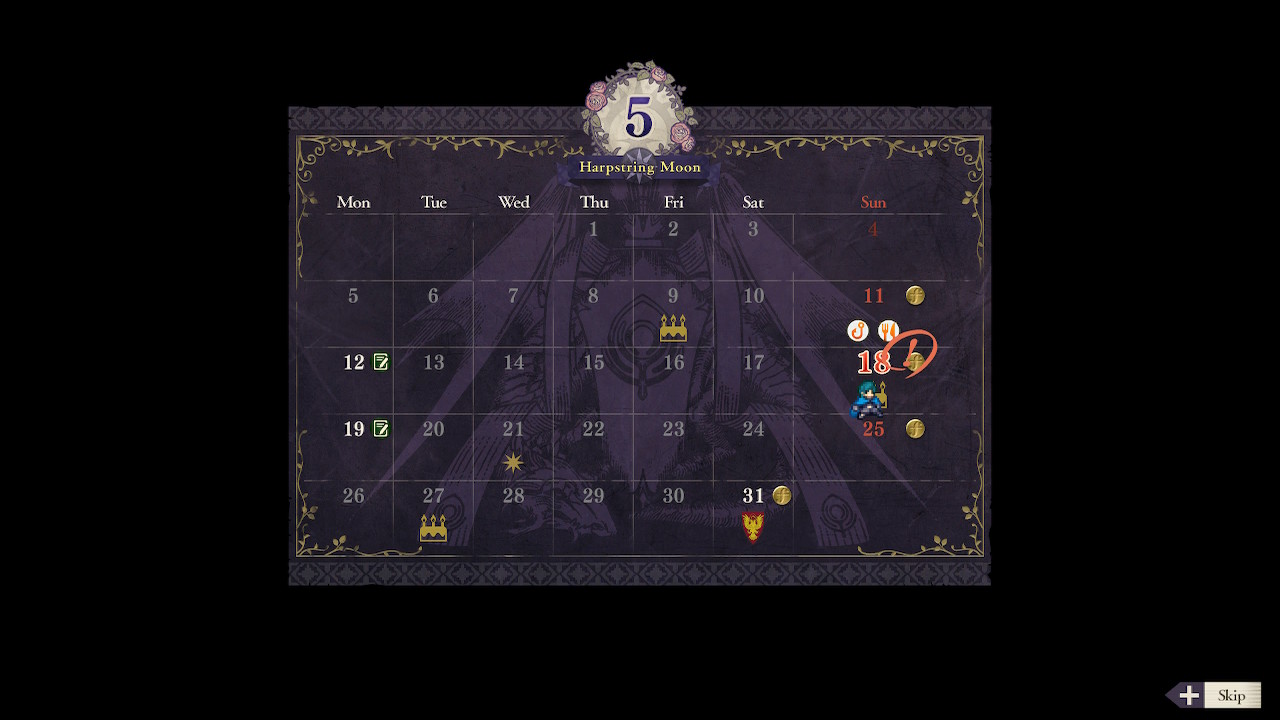
Enjoy your Sunday off!
When you aren’t teaching on a Monday, and the major battle for the month is a few weeks away, you’ll be spending the majority of your time doing whatever you like on your day off. Free time days offer Byleth the following main options, Exploration, Seminar, Battle and Rest.
The exploration option grants you the ability to run around Garreg Mach Monastery, free to roam to your heart’s content. You can complete side-quests, fish, garden, pit your students in a training competition to test their skills and much more. You can even cook meals with your students, or just sit down and get a bite to eat with a couple of them. Most of your time in the monastery will amount to interacting with your students, getting to know them better so that you can better understand them, and thus raise their motivation making them easier to teach. Relationship building can also lead to romantic relationships in the inevitable timeskip future, but that’s all I’m discussing in this review (I don’t want to spoil too much).
It’s important to note that you aren’t just stuck interacting with your students however, as the other houses and even other staff of the monastery are available to talk to. If your class has strength in areas that others are interested, and they like you, other students and staff can even become members of your house. The exploration segments are a lot of fun as they allow you to learn more about the people of the monastery, which in turn allows for better connection with the games cast of characters.
Seminars are classes that can be run on your free day that train certain students in an area of interest to them. These seminars are run by someone proficient in the taught skill, and allow for quicker levelling of particular skills. For example, Byleth may teach a class focusing on sword and authority skills, with the attendees being those who are training those skills. Seminars are quick and simple ways to level skills, and they are good to use when you’d rather not explore the monastery on that given week.
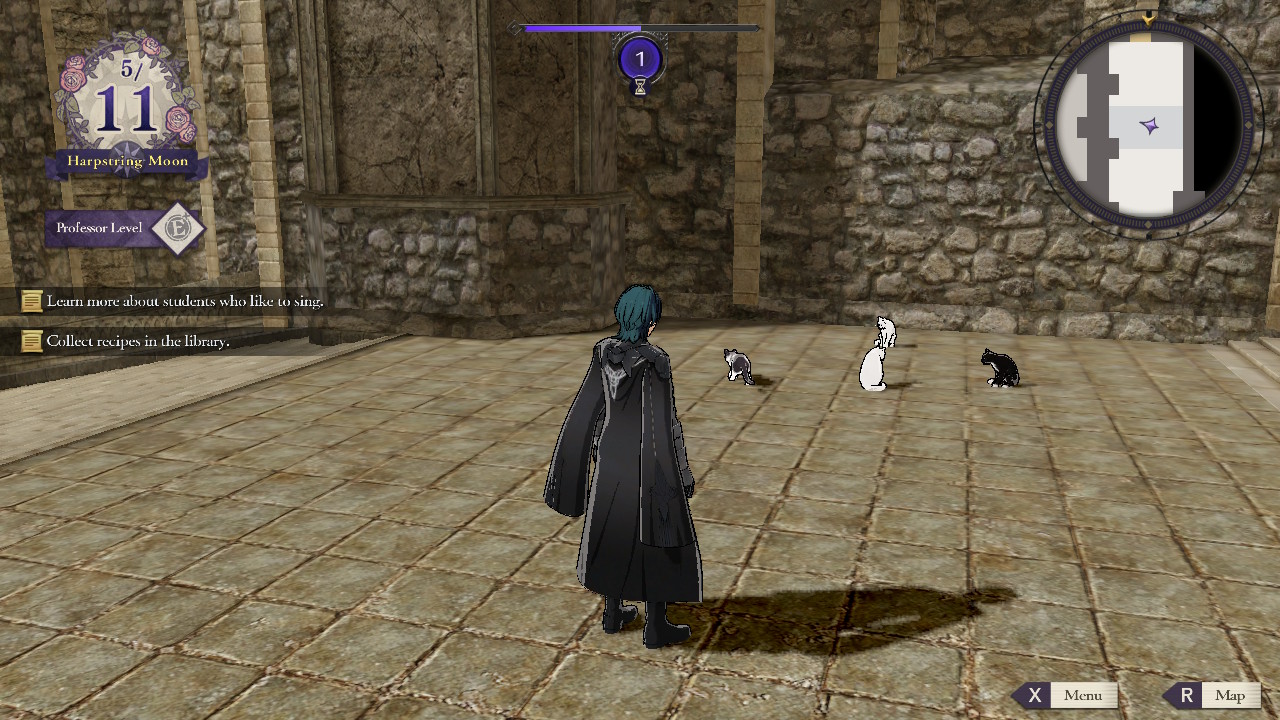
Exploring Garreg Mach Monastery is great fun
The rest option is an option that allows Byleth and his class to take the day off which increases student motivation. It also repairs the legendary Sword of the Creator, a weapon Byleth is granted early in the game as its weapon durability can only be recovered by either resting or repairing it at the blacksmith with rare materials.
Lastly is the Battle option, which refers to the strategic turn-based missions that the Fire Emblem franchise is known for. Before we discuss the battle types, I think it’s important to explain how Fire Emblem actually plays.
Fire Emblem: Three Houses, much like every other Fire Emblem title, involves turn-based battles that sees units progress toward enemies on a grid-based map. Your goal is to complete the given objective, whether it be to eliminate the entirety of the opposition, kill a specific commander, or take control of a certain area of land. Prior Fire Emblem titles employed a battle system known as the weapon triangle. This essentially meant that Swords beat Axes, Axes beat Lances, and Lances beat swords. Fire Emblem: Three Houses gets rid of this system, instead using the new Combat Arts system. For example, a sword may be weak to a particular enemy type, but a combat art may allow for more damage to be dealt, at the expense of greater loss of the weapon’s durability. Each weapon has a set durability, and it’s up to you whether or not the extra damage in the short term is worth the degradation of your weapons in the long run. It’s an intriguing system and I’m happy to say I prefer it compared to my limited exposure to the weapon triangle system.
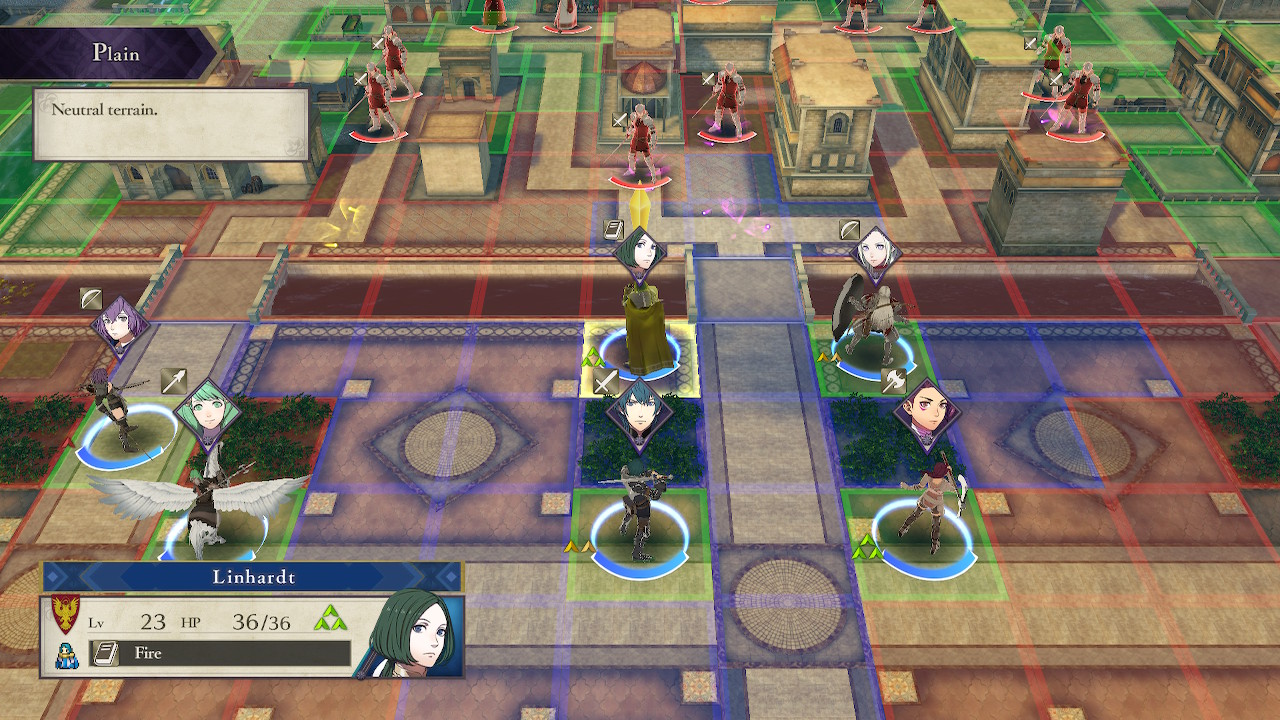
Turn-based battles are addicting as ever
As has become commonplace with each Fire Emblem entry since Fire Emblem: Awakening, the game has two different game modes in the form of Classic and Casual. Classic mode implements permadeath for characters, while casual mode disables this permadeath feature, thus allowing for units that fall in battle to return. The option to choose is welcome as it grants those that may struggle with the ability to retain their levelled up characters, however I feel that the game is best played with the permadeath on, as the constant threat of losing the students you’ve bonded with leads to much more theatre in each battle. Now let’s get back to discussing each battle type.
Auxiliary battles serve as battles with no story beats that you’ll find yourself playing numerous times throughout the game as a means for levelling up yourself and your students. Paralogue battles are essentially side-quests that offer you the chance to learn a bit more about a particular student or couple of students. These story beats aren’t covered throughout the main story, but they offer up interesting background details and revelations about your students that you may otherwise miss. I played each paralogue mission I got, and each one allowed me to better understand the motivation and mindsets of my students. Quest battles are quests accepted while exploring at the Garreg Mach Monastery. Completing these will grant you resources, whether it be meat to cook or materials to help repair or forge weapons. Lastly you’ve got Mission battles, which refer to the monthly story missions that you need to complete. These missions represent battles that occur in the narrative.
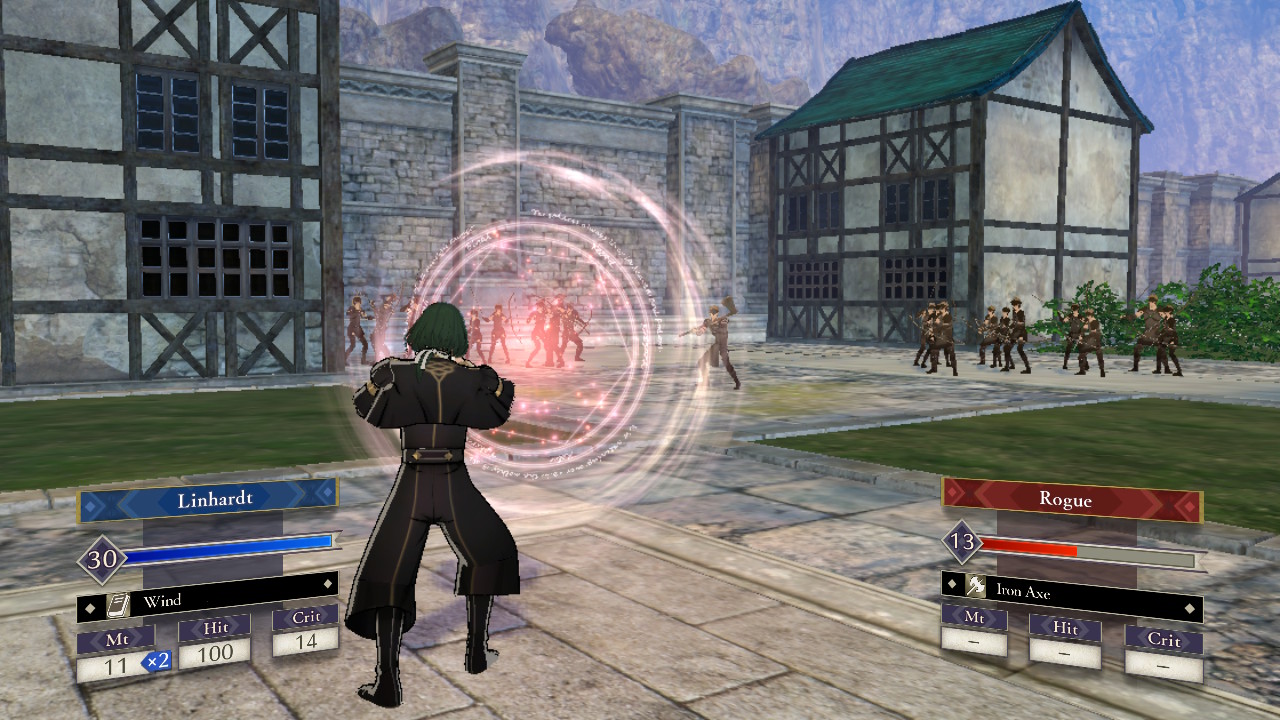
The constant risk of permadeath makes every battle intense
While I feel like Fire Emblem: Three Houses is almost perfect, it does have a couple rather minor shortcomings I feel must be addressed. Exploration segments while fun and interesting for the majority of the playthrough, eventually feel a little tiresome and stale, especially towards the end game when the side quests you have to do are either non-existent or few and far between. Yes you can still spend that time trying to woo a potential suitor or strengthening your relationships with your students and/or other staff, but at this point of the game most of that work has already taken place, with some relationships unable to progress any further due to the game nearing its narrative conclusion. At the end of the day it’s only a minor gripe, as the exploration segments only falter in the last couple of hours of what is a 40-50 hour campaign, but it was undoubtedly upsetting to explore the monastery when there wasn’t really much more to do other than quickly chat to students to boost stats. If I were to have played through the last few hours of the game again, I would’ve overlooked the exploration option and made more use of the seminar and rest options.
The only other gripe I have with the game is that the game drops frames in certain segments, with special attacks that perform busy animations on screen often leading to very minor, yet noticeable frame drops. It is by no means a great issue, but it does certainly appear as minute blemish on what otherwise is an expertly crafted product.
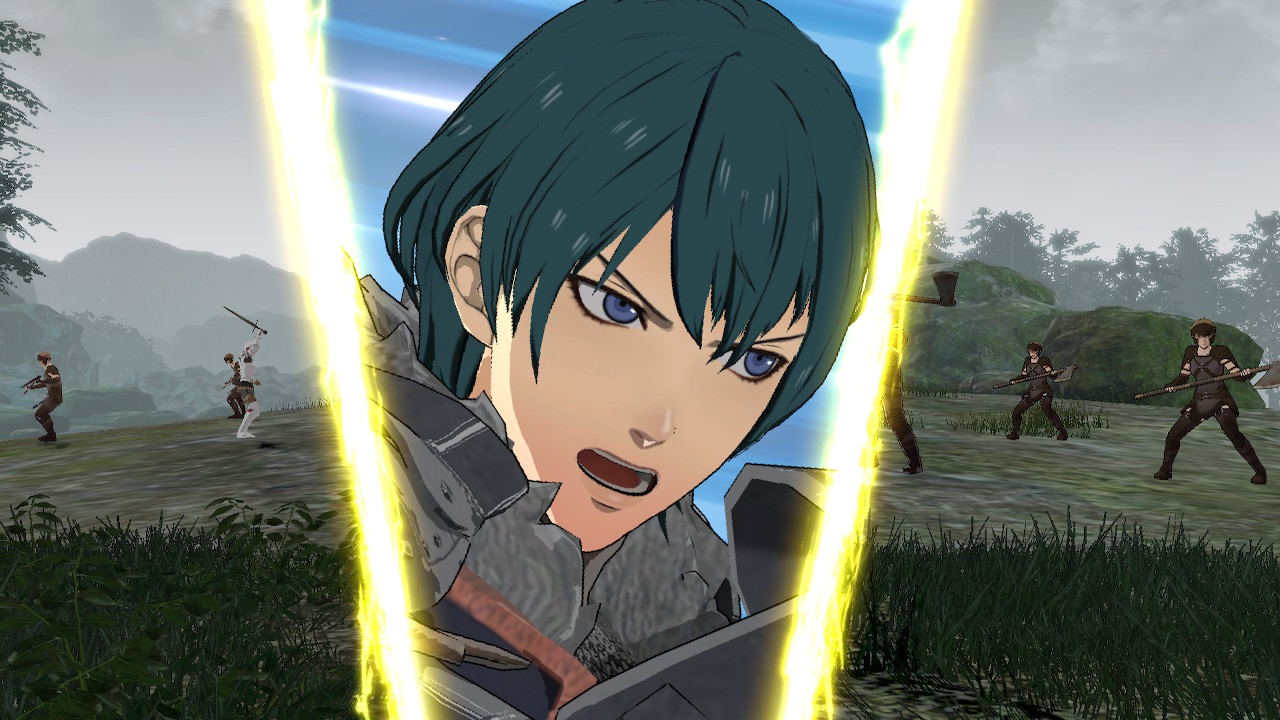
Minor frame drops aside, this game is beautiful
Final Thoughts
Fire Emblem: Three Houses is an amazingly refined and polished tactical role-playing epic that keeps you firmly captivated by its engaging narrative and addictive strategic gameplay. Seldom has a game ever managed to pair a narrative and gameplay style that are arguably as brilliant and addictive as each other, which in turn makes Fire Emblem: Three Houses one of the most complete games I have laid my hands on. The narrative is a grandiose multi-yeared chronicle that sees characters you’ve come to love grow mature before your very eyes, while the gameplay takes the foundations of what a Fire Emblem game plays like and adds more depth, while somehow still serving as a great title for Fire Emblem newbies and veterans alike. Fire Emblem: Three Houses is simply a must play, and you’d be doing yourself a disservice as a Nintendo Switch owner if you ignore this gem of a game.
Reviewed on Switch // Review code supplied by publisher
Click here for more information on WellPlayed’s review policy and ethics
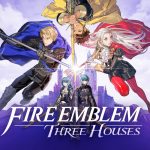
- Intelligent Systems / KOEI TECMO GAMES CO. LTD
- Nintendo
- Switch
- July 26, 2019



Dylan is an avid gamer on all systems and believes that console wars are dumb. He owns over 60 amiibo however, which is a bit of an issue. You can find him on PSN @PlushyPants49 and Twitter @GrumpyGoron





